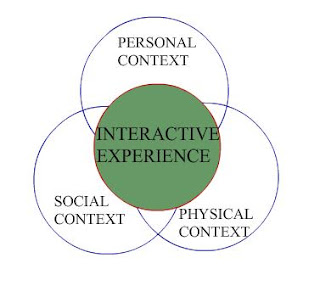= Toward intelligent styling for digitalmuseum exhibitions =
== Reference ==
Jen-Shin Hong, Bai-Hsuan Chen, Sheng-Hao Hung. ”Toward intelligent styling for digitalmuseum exhibitions: modularization framework for aesthetic hypermedia presentations”. Int J Digit Libr (2004) 4: 64–68 / Digital Object Identifier (DOI) 10.1007/s00799-003-0059-3, 2004
== Synopsis ==
In current Web-based hypermedia environments, digital museums enable people to explore collections for inspiration, learning, and enjoyment by constructing and maintaining online interactive and aesthetic hypermedia exhibitions. However, constructing a large-scale exhibition is not an easy work, and in particular, the shaping of presentation styles requires tedious multimedia composing and is indeed extremely laborious. The function of an intelligent styling system is to help museums efficiently and effectively produce and publish attractive exhibitions online. The authors propose a fine-grained modularization framework that decomposes the styling of a typical hypermedia presentation into fine-grained style modules (FGSM) as the first step toward developing an intelligent styling system for digital museum exhibitions. By using this modularization mechanism, a hypermedia authoring system could be implemented which allows content providers to efficiently develop highly aesthetic, media-centric, interactive hypermedia presentations.
image:Role of FGSM in the styling framework.JPG (see the paper)
Generally speaking, a digital museum exhibition should contain content elements and style elements (e.g., background animations, decorating graphics, functional scripts, audio loop, layout setting, font typesetting, etc.). To achieve the reusability, portability, and flexibility of hypermedia styling, the style elements should be decomposable into a set of self-contained, cohesive, and loosely coupled fine-grained style modules (FGSMs).A FGSM presenting a specific content fragment. By assembling and switching FGSMs, a content document can then be presented in different fashions.
image:Logical structure of content document and stylesheet.JPG (see the paper)
A hypermedia document based on a “mono-modal media handler” and a digital museum exhibition management framework has been designed to realize the concept of FGSM. Mono-modal media handler means that one handler deals with a single multimedia file's style.
== Reflection ==
This paper mainly focuses on the modularization framework which helps museums to create digital exhibitions. The reusability of the FGSMs makes the work of shaping presentation styles easier by assembling different set of FGSMs than by creating styling files for every single exhibition. It becomes possible that to create an online exhibition without technology specialists. And also, it enables the exhibitions to be reserved forever after they are created by storing the hyperlinks between content documents and FGSMs.

image:Exhibition forever.JPG
The lines are the handlers mentioned aboveHowever, the styles of exhibitions should be changed according the exhibition themes and goals. It is hard to prepare FGSMs for the future use. On the other hand, it is hard to find an appropriate set of FGSMs for a specific exhibition.
At the beginning of the paper, the authors mentioned the users’ interaction with the virtual exhibitions. I believe that the interactive mode could be integrated in the framework as a kind of special FGSMs.
== Reference ==
1. Van Ossengruggen J (2001) Processing structured hypermedia: a matter of style. PhD thesis, Vrije University of Amsterdam, The Netherlands





